-
 Bitcoin
Bitcoin $106,754.6083
1.33% -
 Ethereum
Ethereum $2,625.8249
3.80% -
 Tether USDt
Tether USDt $1.0001
-0.03% -
 XRP
XRP $2.1891
1.67% -
 BNB
BNB $654.5220
0.66% -
 Solana
Solana $156.9428
7.28% -
 USDC
USDC $0.9998
0.00% -
 Dogecoin
Dogecoin $0.1780
1.14% -
 TRON
TRON $0.2706
-0.16% -
 Cardano
Cardano $0.6470
2.77% -
 Hyperliquid
Hyperliquid $44.6467
10.24% -
 Sui
Sui $3.1128
3.86% -
 Bitcoin Cash
Bitcoin Cash $455.7646
3.00% -
 Chainlink
Chainlink $13.6858
4.08% -
 UNUS SED LEO
UNUS SED LEO $9.2682
0.21% -
 Avalanche
Avalanche $19.7433
3.79% -
 Stellar
Stellar $0.2616
1.64% -
 Toncoin
Toncoin $3.0222
2.19% -
 Shiba Inu
Shiba Inu $0.0...01220
1.49% -
 Hedera
Hedera $0.1580
2.75% -
 Litecoin
Litecoin $87.4964
2.29% -
 Polkadot
Polkadot $3.8958
3.05% -
 Ethena USDe
Ethena USDe $1.0000
-0.04% -
 Monero
Monero $317.2263
0.26% -
 Bitget Token
Bitget Token $4.5985
1.68% -
 Dai
Dai $0.9999
0.00% -
 Pepe
Pepe $0.0...01140
2.44% -
 Uniswap
Uniswap $7.6065
5.29% -
 Pi
Pi $0.6042
-2.00% -
 Aave
Aave $289.6343
6.02%
Which one should I believe when the monthly KDJ crosses at a high level but the quarterly line crosses golden?
A monthly KDJ cross at a high level may signal short-term caution, while a quarterly golden cross suggests long-term bullish potential in crypto markets.
Jun 18, 2025 at 09:56 am
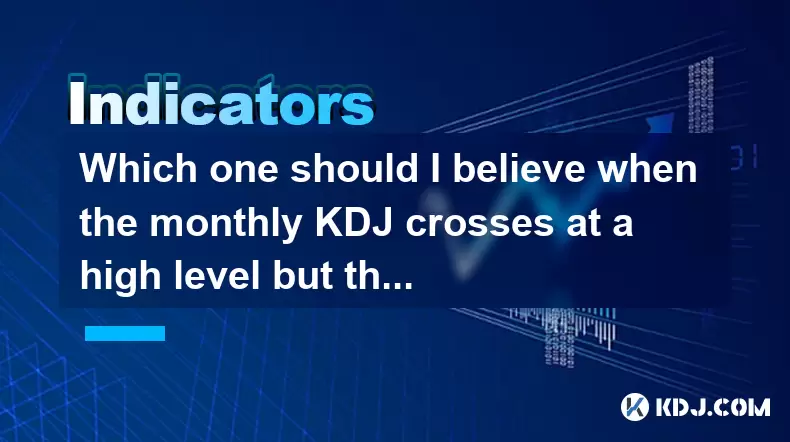
Understanding the KDJ Indicator in Cryptocurrency Trading
The KDJ indicator, also known as the stochastic oscillator, is a momentum-based technical analysis tool widely used by cryptocurrency traders to identify overbought or oversold conditions. It consists of three lines: the %K line, the %D line (a smoothed version of %K), and the %J line (a projection of %K and %D). When these lines cross, especially at extreme levels, they can signal potential trend reversals or continuations.
In the context of cryptocurrencies like Bitcoin or Ethereum, volatility plays a crucial role in interpreting signals from the KDJ indicator. Traders often apply this indicator across different timeframes—daily, weekly, and monthly—to make informed decisions. However, when there's a conflict between the monthly and quarterly readings, confusion may arise.
What Happens When the Monthly KDJ Crosses at a High Level?
A monthly KDJ cross at a high level typically indicates that the asset might be overbought on the monthly chart. This situation usually occurs after a strong uptrend, where the %K line crosses above the %D line near or above the 80 threshold, which is generally considered overbought territory.
- In such scenarios, traders might interpret this as a bearish signal.
- The market could be nearing exhaustion, suggesting a possible pullback or consolidation phase.
- However, due to the high volatility in crypto markets, an overbought condition doesn't always result in a reversal.
Therefore, while a high-level monthly KDJ cross may hint at caution, it should not be taken as a definitive sell signal without further confirmation from other indicators or price action.
Interpreting the Quarterly Golden Cross in the KDJ
A quarterly golden cross in the KDJ refers to a bullish signal where the %K line crosses above the %D line on the quarterly chart, typically from below the 20 level, indicating an oversold condition turning bullish.
- This kind of cross suggests long-term strength building up.
- It may indicate that institutional investors or large holders are starting to accumulate positions.
- On higher timeframes like the quarterly chart, such signals tend to carry more weight due to their broader perspective.
In the cryptocurrency space, where cycles often span months or even years, a quarterly golden cross can be a powerful signpost for future price movements. However, it's essential to consider that these signals may take longer to materialize into actual price changes.
Reconciling Conflicting Signals Between Monthly and Quarterly Charts
When the monthly KDJ shows a bearish cross at a high level while the quarterly KDJ exhibits a golden cross, traders face a dilemma. These conflicting signals suggest divergent momentum across different time horizons.
- A high-level monthly cross might point to short-term profit-taking or correction.
- Meanwhile, the quarterly golden cross implies underlying strength in the medium to long term.
- Traders must assess whether they are positioning for short-term swings or long-term investment.
One approach is to use position sizing strategies:
- Reduce exposure if the monthly chart signals weakness.
- Maintain or add to positions gradually if the quarterly chart supports a bullish outlook.
This method allows traders to manage risk while staying aligned with both short-term and long-term trends.
How to Use Other Indicators to Confirm or Dismiss These Signals?
Relying solely on the KDJ indicator can lead to misinterpretation, especially in volatile markets like cryptocurrency. Combining it with other tools can provide clarity:
- Moving Averages: Check if price is above key moving averages like the 50 or 200-day MA.
- Volume Analysis: Rising volume during a quarterly golden cross adds credibility to the bullish signal.
- RSI (Relative Strength Index): Compare RSI levels on both monthly and quarterly charts to confirm overbought or oversold conditions.
- Price Patterns: Look for candlestick patterns or support/resistance levels aligning with KDJ signals.
By integrating multiple analytical tools, traders can filter out false signals and improve decision-making accuracy.
Frequently Asked Questions
Q1: Can the KDJ indicator alone be trusted for making trading decisions in crypto?
While the KDJ indicator provides valuable insights, relying solely on it can be risky. Crypto markets are highly volatile and influenced by news, macroeconomic factors, and whale activities. Always combine the KDJ with other technical and fundamental analyses.
Q2: Is the quarterly golden cross more reliable than the monthly KDJ cross?
Not necessarily. The reliability depends on your trading timeframe and strategy. If you're a long-term investor, the quarterly golden cross might hold more significance. For active traders, the monthly signal could be more actionable.
Q3: How do I handle conflicting signals from different timeframes effectively?
Use a multi-timeframe analysis approach. Observe the overall trend on higher timeframes (like quarterly) and look for entries or exits based on lower timeframes (like daily or weekly). Also, employ risk management techniques such as stop-loss orders and position scaling.
Q4: Are KDJ crossovers more effective in certain cryptocurrencies compared to others?
Yes. More liquid and less manipulated assets like Bitcoin or Ethereum often yield more reliable KDJ signals. Altcoins with low liquidity or erratic volume may produce misleading signals. Always backtest any strategy before applying it live.
Disclaimer:info@kdj.com
The information provided is not trading advice. kdj.com does not assume any responsibility for any investments made based on the information provided in this article. Cryptocurrencies are highly volatile and it is highly recommended that you invest with caution after thorough research!
If you believe that the content used on this website infringes your copyright, please contact us immediately (info@kdj.com) and we will delete it promptly.
- Pi Network, KYC Sync, and Pi2Day: A Deep Dive into the Latest Developments
- 2025-06-20 18:45:13
- Dogecoin's Triangle Tango: Will Bullish Sentiment Lead to a Breakout?
- 2025-06-20 19:05:12
- Ethereum, Bitcoin, Price Prediction: Navigating Crypto Tides in a Tumultuous Market
- 2025-06-20 19:05:12
- Ethereum, Bitcoin, and the Price Prediction Game: What's Hot Now?
- 2025-06-20 18:25:13
- Bitcoin Price Breakout Imminent? Decoding the Crypto Market's Next Big Move
- 2025-06-20 18:45:13
- Crypto, AI, and Investing: Navigating the Future of Finance
- 2025-06-20 19:25:12
Related knowledge
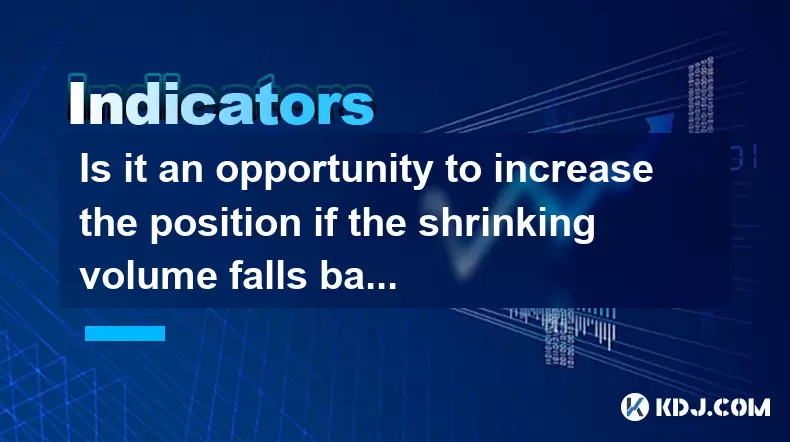
Is it an opportunity to increase the position if the shrinking volume falls back to the rising trend line?
Jun 20,2025 at 06:22pm
Understanding the Shrinking Volume in Cryptocurrency TradingIn cryptocurrency trading, volume is one of the most critical indicators used to confirm price movements and trends. When traders observe a scenario where volume shrinks during a pullback, it can signal either a lack of selling pressure or an imminent reversal. This phenomenon often occurs when...
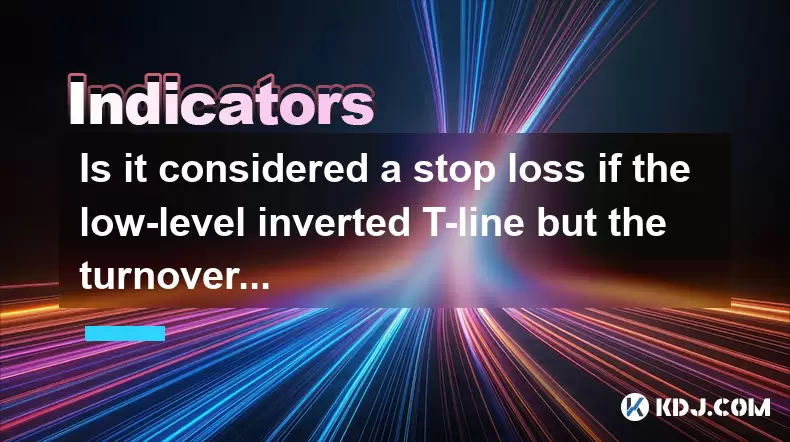
Is it considered a stop loss if the low-level inverted T-line but the turnover rate is extremely low?
Jun 20,2025 at 04:49pm
Understanding the Low-Level Inverted T-Line in Cryptocurrency ChartsIn technical analysis within the cryptocurrency market, candlestick patterns are crucial indicators for traders to predict potential price movements. The low-level inverted T-line is a specific type of candlestick pattern that often raises questions among traders. This pattern typically...
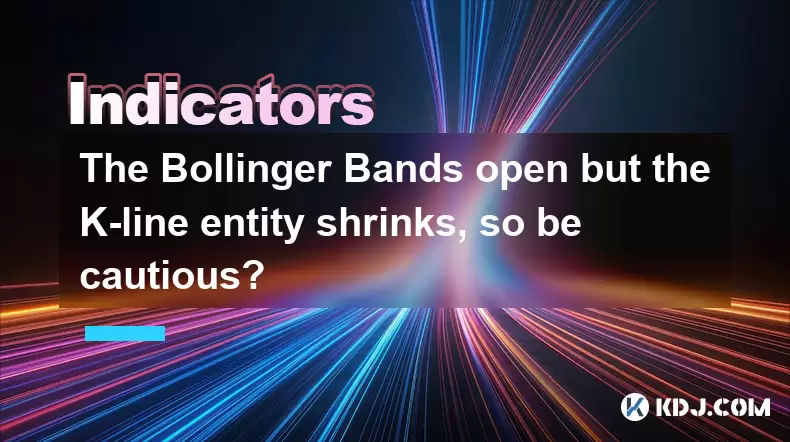
The Bollinger Bands open but the K-line entity shrinks, so be cautious?
Jun 20,2025 at 06:08pm
Understanding the Bollinger Bands and K-Line RelationshipBollinger Bands are a popular technical analysis tool used in cryptocurrency trading. They consist of a moving average (usually 20-period) with two standard deviation lines plotted above and below it. These bands dynamically adjust to price volatility, expanding when volatility increases and contr...
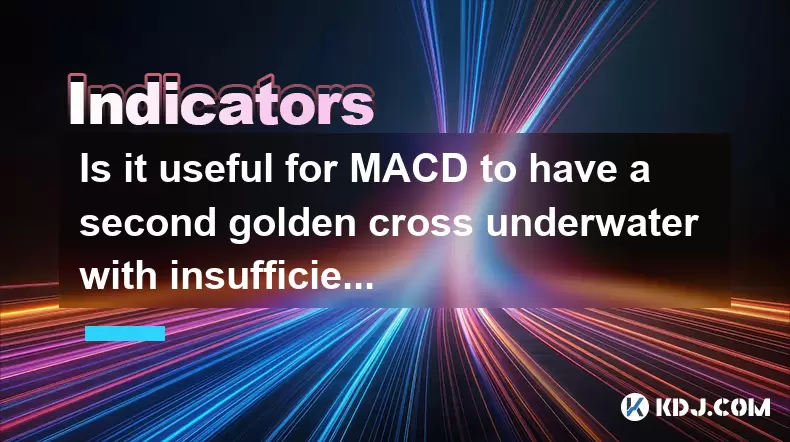
Is it useful for MACD to have a second golden cross underwater with insufficient volume?
Jun 20,2025 at 06:49pm
Understanding the MACD and Its Golden CrossThe Moving Average Convergence Divergence (MACD) is a popular technical analysis tool used by traders to identify potential buy or sell signals. It consists of three components: the MACD line, the signal line, and the histogram. The golden cross occurs when the MACD line crosses above the signal line, often see...
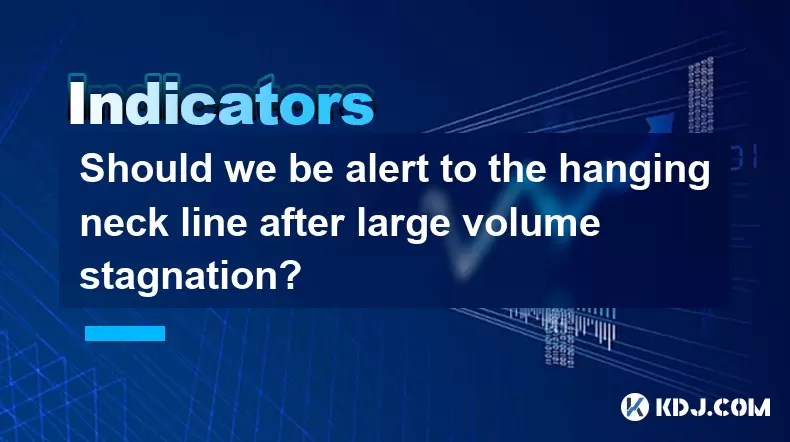
Should we be alert to the hanging neck line after large volume stagnation?
Jun 20,2025 at 07:01pm
Understanding the Hanging Neck Line in Cryptocurrency TradingThe hanging neck line is a technical analysis pattern that often appears on candlestick charts and is considered a bearish reversal signal. In the context of cryptocurrency trading, recognizing this formation can be crucial for traders looking to avoid potential price drops after a period of u...

Is it a real drop when KDJ crosses but the trading volume shrinks?
Jun 20,2025 at 03:49pm
Understanding KDJ and Its Role in Cryptocurrency TradingIn the realm of cryptocurrency trading, technical analysis plays a crucial role in identifying potential price movements. The KDJ indicator, also known as the stochastic oscillator with a J line added for momentum confirmation, is widely used by traders to gauge overbought or oversold conditions. I...

Is it an opportunity to increase the position if the shrinking volume falls back to the rising trend line?
Jun 20,2025 at 06:22pm
Understanding the Shrinking Volume in Cryptocurrency TradingIn cryptocurrency trading, volume is one of the most critical indicators used to confirm price movements and trends. When traders observe a scenario where volume shrinks during a pullback, it can signal either a lack of selling pressure or an imminent reversal. This phenomenon often occurs when...

Is it considered a stop loss if the low-level inverted T-line but the turnover rate is extremely low?
Jun 20,2025 at 04:49pm
Understanding the Low-Level Inverted T-Line in Cryptocurrency ChartsIn technical analysis within the cryptocurrency market, candlestick patterns are crucial indicators for traders to predict potential price movements. The low-level inverted T-line is a specific type of candlestick pattern that often raises questions among traders. This pattern typically...

The Bollinger Bands open but the K-line entity shrinks, so be cautious?
Jun 20,2025 at 06:08pm
Understanding the Bollinger Bands and K-Line RelationshipBollinger Bands are a popular technical analysis tool used in cryptocurrency trading. They consist of a moving average (usually 20-period) with two standard deviation lines plotted above and below it. These bands dynamically adjust to price volatility, expanding when volatility increases and contr...

Is it useful for MACD to have a second golden cross underwater with insufficient volume?
Jun 20,2025 at 06:49pm
Understanding the MACD and Its Golden CrossThe Moving Average Convergence Divergence (MACD) is a popular technical analysis tool used by traders to identify potential buy or sell signals. It consists of three components: the MACD line, the signal line, and the histogram. The golden cross occurs when the MACD line crosses above the signal line, often see...

Should we be alert to the hanging neck line after large volume stagnation?
Jun 20,2025 at 07:01pm
Understanding the Hanging Neck Line in Cryptocurrency TradingThe hanging neck line is a technical analysis pattern that often appears on candlestick charts and is considered a bearish reversal signal. In the context of cryptocurrency trading, recognizing this formation can be crucial for traders looking to avoid potential price drops after a period of u...

Is it a real drop when KDJ crosses but the trading volume shrinks?
Jun 20,2025 at 03:49pm
Understanding KDJ and Its Role in Cryptocurrency TradingIn the realm of cryptocurrency trading, technical analysis plays a crucial role in identifying potential price movements. The KDJ indicator, also known as the stochastic oscillator with a J line added for momentum confirmation, is widely used by traders to gauge overbought or oversold conditions. I...
See all articles

























































































